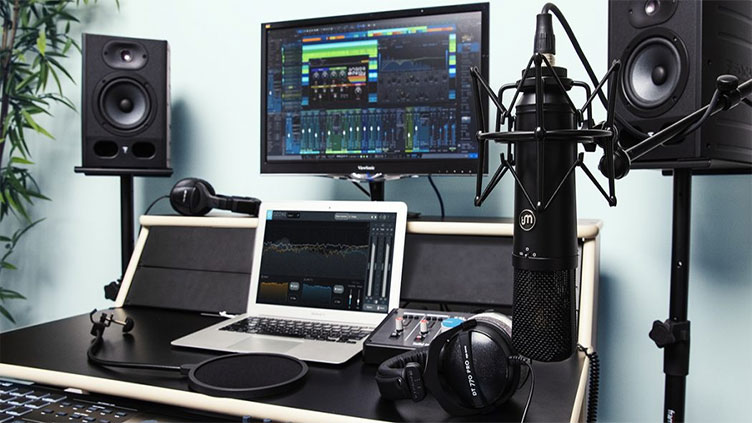What you really need for your home studio

Entertainment
Essential knowledge and budget-friendly gear
(Web Desk) - If you’re passionate about music and want to take your creative endeavors to the next level, setting up a home studio is a fantastic idea.
Contrary to popular belief, you don’t need to invest a fortune in high-end equipment to produce professional-quality music.
In this “What You Really Need for Your Home Studio” guide, we’ll walk you through what you truly need when setting up a home studio for music production.
From essential knowledge to budget-friendly gear, we’ve got you covered.
THE HEART OF YOUR STUDIO: YOUR COMPUTER: The heart of any home studio is a computer. Fortunately, you don’t need a supercharged, high-end machine to get started.
A decent laptop or desktop computer with sufficient processing power and memory will do the job just fine.
Ensure it can handle digital audio workstations (DAWs) and has ample storage space for your music files.
THE BUDGET-FRIENDLY AUDIO INTERFACE: Next on the list is an audio interface. This device connects your instruments and microphones to your computer and plays a crucial role in capturing high-quality audio.
While there are premium interfaces with a myriad of features, you can find budget-friendly options that perform admirably for beginners.
Look for interfaces with at least two input channels, as this will allow you to record vocals and instruments simultaneously.
SELECTING THE RIGHT MICROPHONE: Your microphone choice can significantly impact the quality of your recordings.
For vocals, consider a condenser microphone, as they’re known for their sensitivity and ability to capture intricate details.
Brands like Audio-Technica and Rode offer excellent budget-friendly condenser microphones.
If you’re recording instruments, dynamic microphones like the Shure SM57 are versatile and won’t break the bank.
Remember, you can always expand your microphone collection as your budget grows.
MONITORING YOUR SOUND: Investing in a pair of studio monitors or high-quality headphones is essential for accurate sound monitoring.
Studio monitors are ideal if you have a dedicated recording space, but if you’re in a shared environment or on a tight budget, quality headphones will suffice.
Look for options known for their flat frequency response to ensure accurate mixing and mastering.
ACOUSTIC TREATMENT: To achieve professional-sounding recordings, you’ll need to address acoustic issues in your recording space.
Acoustic treatment, such as bass traps and acoustic panels, can significantly improve the sound quality by reducing unwanted reflections and resonances.
If you’re on a budget, consider DIY solutions or start with the basics like bass traps in corners and diffusers on walls.
DIGITAL AUDIO WORKSTATION SOFTWARE: Last but not least, you’ll need digital audio workstation (DAW) software to record, edit, and produce your music.
Many DAWs offer free or affordable versions that are perfect for beginners.
Popular options include Reaper, Ableton Live Lite, and Cakewalk by BandLab. Experiment with different DAWs to find the one that suits your workflow and musical style.
In conclusion, setting up a home studio for music production doesn’t have to drain your wallet.
By focusing on the essentials - a capable computer, a budget-friendly audio interface, quality microphones, monitoring solutions, and acoustic treatment - you can kickstart your music-making journey without breaking the bank.
Remember, as your skills and budget grow, you can gradually upgrade your gear.
So, get ready to unleash your creativity and make your mark in the world of music production.


